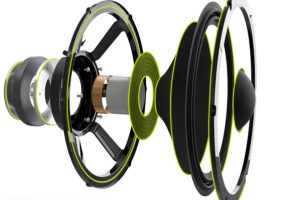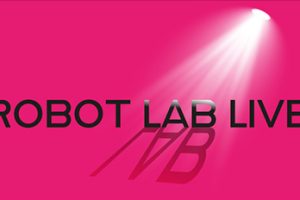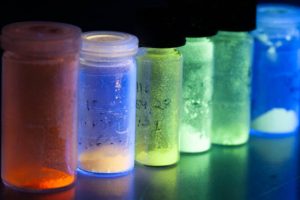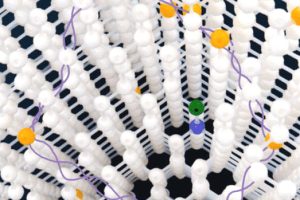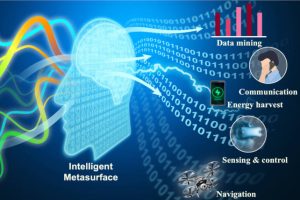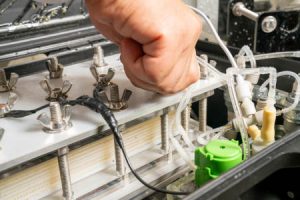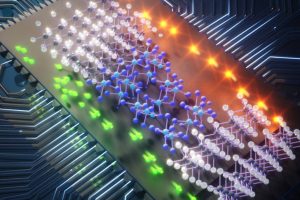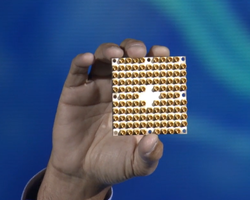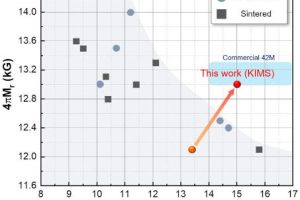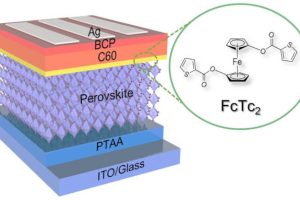Bostik has announced a prototype cyanoacrylate (‘superglue’) adhesive “for long-term critical applications such as those required in the automotive and electronics industry”, it said. “It will propel instant adhesives’ use outside of repair and maintenance applications, into a solution that can be relied upon for longer-term, structural engineering use.” It is a two-part n-butyl cyanoacrylate-based adhesive, with the hydrophobic butyl ...
Research
The latest electronics research news from within the industry and universities from around the world.
UK robotics showcase on YouTube in June
Robot Lab Live will be a virtual robotics showcase at the UK Festival of Robotics, featuring 12 of the UK’s robotics labs. Now in its second year, and hosted by UK government research funding agency ESPRC, Robot Lab Live will be accessible through the UK Robotics YouTube channel on 22 June. Featured demos this year, said the EPSRC, will include: Smart drones ...
Low-cost electrochemical cell emits 90CRI white
Copper is the key to low-cost electrochemical cells that emit blue and white light, according to the Technical University of Munich and the University of Turin, which have used deep data analysis to guide their research. By using statistical tools and other methods on over 90 similar copper-based compounds (of the form Cu(N^N)(P^P)) that have been used in light-emitting experiments, the team ...
Diamond qubits are fault-tolerant
Spin qubits in diamond can be made fault-tolerant, according to researchers from Fujitsu, Element Six and QuTech, who have designed and built one. Quantum bits are noisy, and techniques are needed to handle this noise of quantum computers are to be useful. One possibility is not to work with single qubits, but to do identical operations on bunches of linked ...
Intelligent metasurfaces laid bare
Intelligent metasurfaces – structures that dynamically manipulate electromagnetic radiation using arrays of phase modifiers under the supervision of artificial intelligence – will be key to 6G communications and even computation, according to researchers from Peking, Southeast and Xidian Universities, who have published a survey of the state-of-the-art. “This field has refreshed human insights into many fundamental laws,” according to the Chinese ...
Portable MIT desalinater makes drinking water for 20Wh/litre
Researchers at MIT have produced a prototype water purifier that can turn cloudy seawater into drinking water using ~20Wh/litre. Developed under electrical engineer Professor Jongyoon Han, the unit fits into a small suitcase, and relies on multiple stages of ‘ion concentration polarisation’ (ICP), followed by electrodialysis to reduce residual salt concentration. ICP, pioneered by Han’s group, applies an electrical field to ...
Superconducting diode made reality
Unidirectional superconductivity without a magnetic fields is possible, according to the technical university of Delft. The proof-of-concept uses a van der Waals heterostructure with 2D materials: NbSe2 – Nb3Br8 – NbSe2, and is superconducting on one direction, and normally-conducting in the other. Compared with the semiconductor diode, “superconductors never had an equivalent of this one-way idea with no magnetic field, as ...
Intel scales up qubit fabrication
Researchers at Intel and QuTech – consisting of the Delft University of Technology (TU Delft) and the Netherlands Organization for Applied Scientific Research (TNO) – have created silicon qubits at scale at Intel’s D1 manufacturing factory in Hillsboro, Oregon. The result is a process that can fabricate more than 10,000 arrays with several silicon-spin qubits on a single wafer with ...
Rare earth magnet uses less neodymium
Grade 42M commercial magnet performance (see graph) can be achieved with ~30% less neodymium than before, according to the Korea Institute of Materials Science. More of the less costly rare-earth cerium is the answer, but performing this substitution has been proving difficult. “In order to develop a neodymium-reduced permanent magnet, the content of cerium has to be increased,” said KIMS. ...
More stability and 25% efficiency for perovskite solar cells
Metal-organic ferrocenes could make perovskite solar cells more stable, according to Imperial College in London. The cells in question are a joint venture between Imperial and City University of Hong Kong (CityU). “Our collaboration with was beautifully serendipitous, arising after I gave a talk about new ferrocene compounds and met Zonglong Zhu from CityU, who asked me to send over some ...
 Electronics Weekly Electronics Design & Components Tech News
Electronics Weekly Electronics Design & Components Tech News
